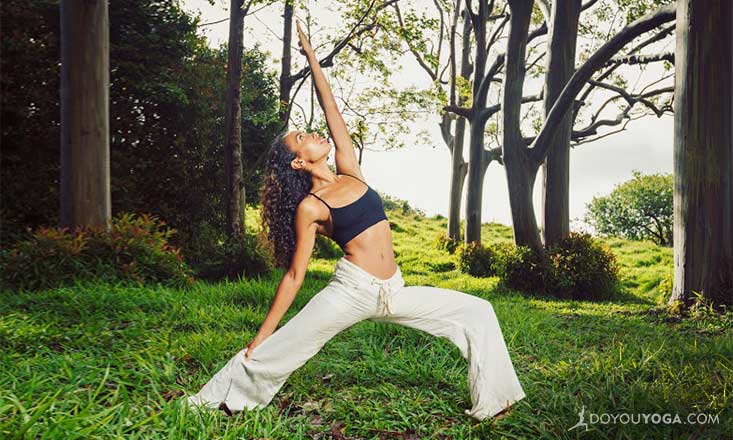When I first began practicing yoga, I was monogamous in my practice.
I loved the regimented 26 postures of the Bikram series. I did rigorous Bikram challenges, and the heat added the extra intensity which I craved. Knowing exactly which postures come next felt great, and going deeper into each pose in every class was a huge benefit with each repetition.
I fell in love with the moving meditation of yoga. It changed my relationship with my body, mind, and spirit. I decided that I wanted to become an instructor. I wanted to help ignite the passion that I felt for this practice in others seeking transformation.
I have two children, a full time job, and a full life in New York, however, so going through Bikram training in California was not a feasible option (nor was spending almost $20,000).
I began my teacher training in Ashtanga Vinyasa. At first, I felt a bit lost, and naturally, stepping out of one’s comfort zone is never easy.
I grew to love, love, love Vinyasa! I went back to a Bikram class recently for the first time in over a year. While it has its place in my heart and I enjoyed it, it was not with the same passion that I once felt. Here are four reasons Vinyasa Flow yoga has changed my mind and my yoga practice.
1. Chaturanga Arms
“Do you lift weights?”
“Nope. These are my Chaturanga arms.”
This is a likely conversation had among many yogis. Vinyasa yoga serves as strength training which builds lean muscle throughout the body. Yogis who get their flow on regularly (Hello, Madonna!) have great definition in their arms.
Chaturanga Dandasana or Four-Limbed Staff Pose in its full expression is, in fact, a push-up. As we flow through our Vinyasa, we are being mindful of form and breath, while also doing push-ups throughout our practice. This arm strength is good preparation for more challenging arm balances.
2. Music and Transcendence
The merging of yoga with music has led to some of the most transcendent yoga experiences of my life. The vibration of sound influences the emotions; when emotions enter the heart, the rate of our vibration shifts, helping to open our entire being.
Experiencing music during yoga class has expanded my knowledge of ethereal sounds from Deva Primal and Snatam Kaur to the chants of Krishna Das, while flowing to the sacred sounds of Bob Marley has also served as a powerful current for a transformative flow.
Super popular songs should be avoided, however, because withdrawal of the senses is a goal of yoga, and music should not detract from that.
Music can be a truly sacred part of yoga practice. Vinyasa Flow has helped me to understand the benefits of chants and words outside the body and how they penetrate more deeply within the body during our practice.
3. Grace in Motion
Vinyasa means "breath-synchronized movement.” It’s a series of poses that move through the power of our inhalations and exhalations.
Vinyasa movements are smooth, and as we flow using our breath as our guide, the practice becomes almost dance-like, which explains why it is sometimes referred to as Vinyasa Flow or just Flow Yoga.
Vinyasa has both physical and mental benefits. Physically, sweat releases toxins and re-energizes our bodies. Mentally, the synchronized breathing relaxes the chatter of the mind and helps to release any blockage of energy flow throughout our bodies.
4. Curiosity over Predictability
While practicing Bikram, I felt successful. I loved knowing what came next, and even what the instructor would say next. It was predictable. While I reached new depths, I realize now that I was relying on predictability.
Now, I approach my practice with curiosity. Each instructor has their own style; some read from the sutras, while others infuse chanting and even provide deeper knowledge of the yamas and niyamas. I love not knowing which sequence will await my body, mind, and spirit as I root myself down on my mat.
For me, the Vinyasa Flow approach to yoga has allowed for deeper vulnerability and self-expansion. Changing our minds, opening our hearts, and making space for change can often lead to greater self-awareness in our practice and in our lives.
“Those who cannot change their minds cannot change anything.” – George Bernard Shaw


